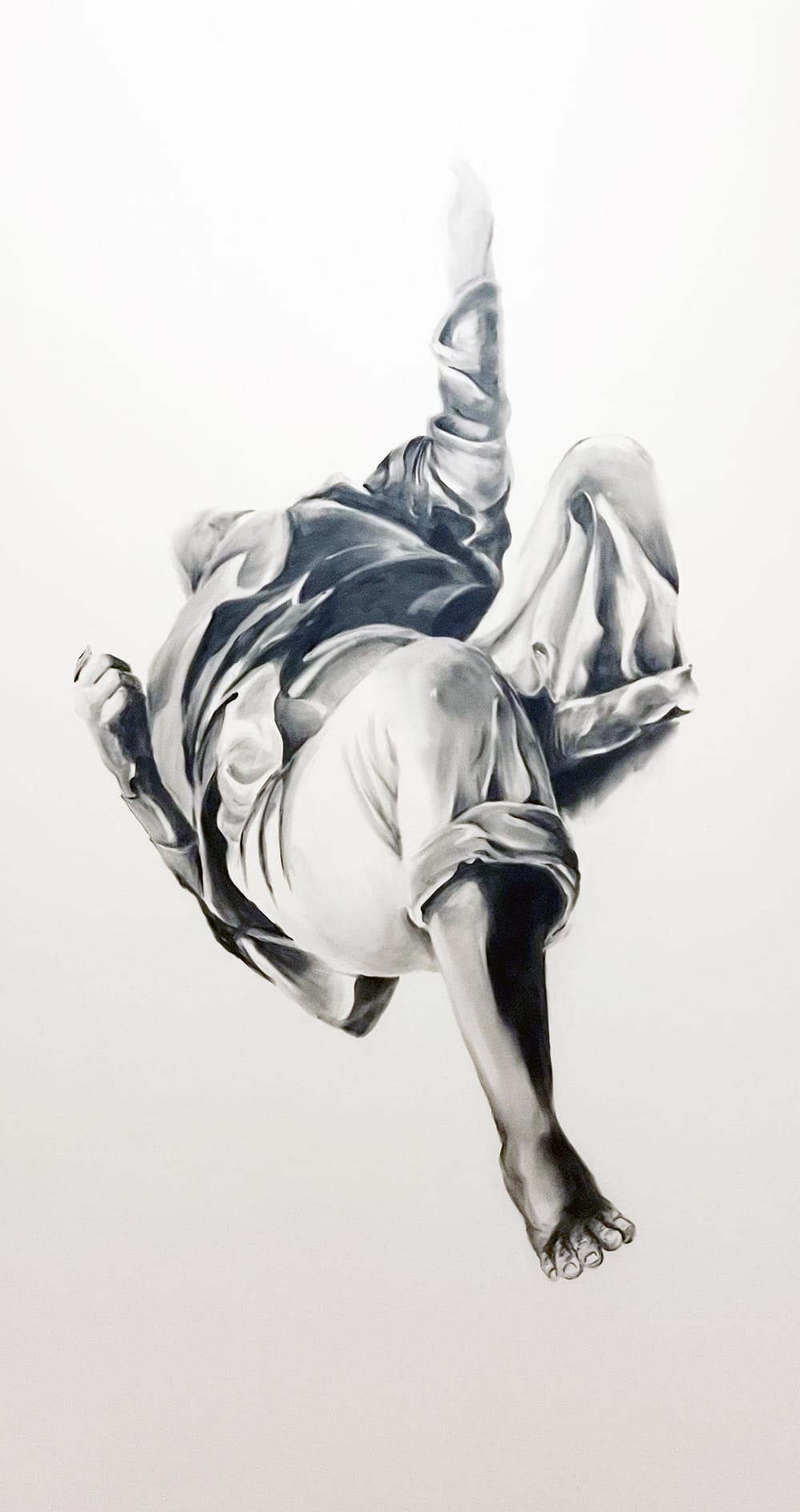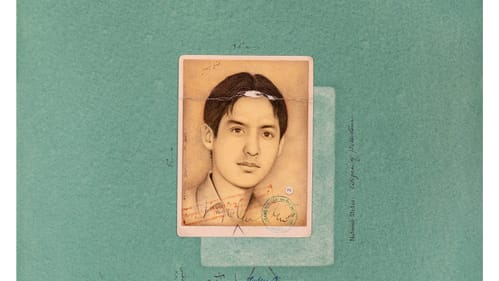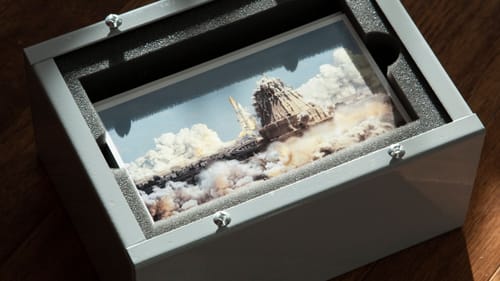Stay in the Loop
BSR publishes on a weekly schedule, with an email newsletter every Wednesday and Thursday morning. There’s no paywall, and subscribing is always free.
Undoing the visual tools of oppression
Twelve Gates Arts presents Numb Images

Images bombard us everyday. Issues of control, information overload, skewed versions of events, and suppressed narratives are explored by artists Francis Estrada, Syed Hussain, and Farideh Sakhaeifar in Numb Images, thoughtfully curated by Rashmi Viswanathan in the gallery of Old City nonprofit Twelve Gates Arts. Through paintings, drawings, video, and photographs, the artists bring attention to how and why stories are erased or told, and by whom.
The bright one-room gallery is lined by 18 works on the walls, all hanging at eye level. A video plays in an alcove on the back wall, and a small metal box sits on the low, street-facing windowsill. The labels on the works do not include the artists’ names; who created what can be seen on the gallery’s “featured artists” webpage.
As the saying goes, “the winner tells the tale,” and photography is an effective tool of oppression and surveillance against the “other.” Viswanathan, assistant professor of modern and contemporary art history at the University of Hartford, says photographs can be used to “silence a narrative, to dehumanize conceptions of faraway conflict.” Colonial populations living under imperial rule are photographed against their will and portrayed as bizarre (at best) by those wielding power, and the “enemy” in conflicts is demonized; these tactics numb us to their humanity. Another way to bury a story is simply not to tell it, leaving people and cultures out of the frame.
Dying on the way
Four exquisite portraits by Hussain bring some of those people back into view. Painting from identity papers and family photographs, he creates very personal memorials to members of the Hazara Shia communities in Afghanistan and Pakistan. Born in Quetta and living in Lahore, Hussain is renowned for his Indo-Persian miniature paintings. In Portrait 37 (2021), warmly rendered in opaque watercolor on wasli paper, a bright-eyed student’s identity card is stamped “Lost his life on the way ... Quetta.” We’re left pondering what happened to this young person, and why people died “on the way … Quetta” in such great numbers that bureaucrats have a rubber stamp that describes their fate.

Humanizing the “other”
Hussain’s portraits honor those who have disappeared, while Estrada decriminalizes the “others” in five drawings and a video that deny the “winner” any visual presence. Estrada’s pieces focus on people whose stories were told in ways that demonized them. Of special note are two elegant charcoal drawings on vellum, Bagsak 1 and Bagsak 2 (both 2022), meditations on the death of a Moro population on Jolo, a southwestern Philippine island. From the American perspective, a rebellion was crushed in the 1913 Battle of Bagsak. To others, the battle was actually a massacre. The artist, born in the Philippines and living in New York, removes all context around the figures, suspending the viewer’s judgment of who and where they are. With these precise renderings of anonymous human beings falling through white space, Estrada conveys a sense of imbalance, disturbed equilibrium.
“A mass of clash”
Sakhaeifar, a New York-based multidisciplinary artist born in Tehran, shows eight manipulated photographs from her series Pending (2015) and You are in the war zone (2016-2017). In Pending, the artist appropriates stock photographs of rubble-strewn conflict scenes and removes the noncombatants, emphasizing statelessness. They were there: their backpacks and bundles seem to float above otherworldly desert landscapes. Collaborating with Sadra Shabab, Sakhaeifar layers ghostly soldiers, conflicts, and visions of battles’ aftermaths onto Shabab’s street photographs in You are in the war zone. The effect is that of a battle plan, the choreography of a deadly dance between the people in the photograph and the drawings of mayhem happening in the same space.

Sakhaeifar’s monumental digital print on canvas, When taking down a statue, a chain works better than a rope (2021), shows a statue’s plinth overlaid with so many images of protest and oppression that they become senseless, overwhelming us into numbness: “a mass of clash,” says Viswanathan. The artist’s ISIS/NASA series (2015), a collection of photographs housed in a small, official-looking aluminum box, is displayed on the gallery’s wide, low windowsill. Visitors can sit and look through the pictures of explosions and billowing clouds of smoke. Examining the photographs, it’s difficult to decide whether we’re holding evidence of triumphant rocket launches or destructive bombings. Trying to see the truth, we automatically begin to judge what’s happening in these images. Then realization hits: we may have clues, but we don’t have evidence.
Numb Images is a lot to take in, revelatory on many levels, and well worth a visit.
Know before you go: this show includes photographs of bomb explosions and drawings of human conflict.
Above: Battle or massacre? Francis Estrada’s 2022 Bagsak 1 denies the context around a 1913 conflict on Jolo, a southwestern Philippine island. (Photo courtesy of the artist and Twelve Gates Arts.)
What, When, Where
Numb Images. Through April 21, 2023, at Twelve Gates Arts, 106 North 2nd Street, Philadelphia. (215) 253-8578 or twelvegatesarts.org.
Accessibility
There is one step at the entrance to Twelve Gates Arts.
Sign up for our newsletter
All of the week's new articles, all in one place. Sign up for the free weekly BSR newsletters, and don't miss a conversation.

 Emily Schilling
Emily Schilling